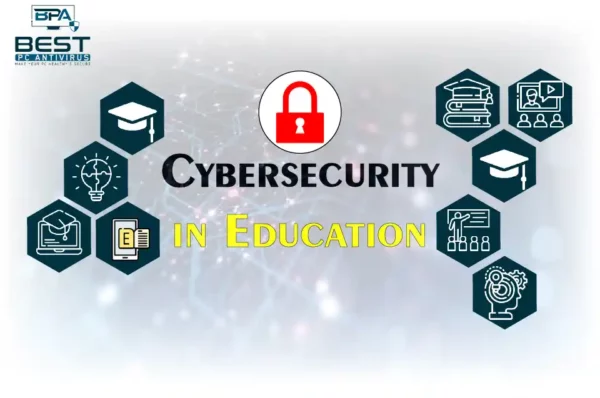Learn about the six most common ways hackers steal your password and how to protect yourself from becoming a victim. Discover how phishing, brute force, targeted personal attacks, technical hacks, malware, and password reuse can all compromise your online security, and learn practical tips for strengthening your passwords, enabling two-factor authentication, and keeping your sensitive information safe online.
Way #1 Phishing
Phishing is a type of online scam where a fraudulent party tries to trick you into giving them your sensitive information such as passwords, usernames, and credit card details. This can be done through various means such as email, social media, and even text messages.
Phishing attacks usually involve a fraudulent party pretending to be a legitimate entity, such as a bank or a popular online service, and asking you to provide your login credentials. They might ask you to click on a link that takes you to a fake login page or download a malicious attachment that installs a keylogger or other malware on your device.
Once the fraudulent party has your login credentials, they can log into your account and access any sensitive information that’s stored there. They can use this information to steal money from your accounts, make unauthorized purchases, or even steal your identity.
It’s important to be cautious when receiving emails or messages that ask for your sensitive information. Always verify the sender’s identity and ensure that you’re on a legitimate website before entering any sensitive information. You can also use password managers and enable two-factor authentication to add an extra layer of security to your accounts.
Way #2 Brute Force Attacks
Brute force attacks are a method used by hackers to crack passwords by trying every possible combination of characters until the correct password is found. This is done through an automated software that can test thousands or even millions of password combinations per second.
In brute force attacks, the attacker uses a software tool to repeatedly attempt to log in to your account with different password combinations until the correct one is found. This method is often used when the attacker does not have any prior information about the password, such as a password hint or a previously leaked password.
Brute force attacks can be successful if the password is weak and easy to guess. Passwords that are short, contain only lowercase letters, or are based on dictionary words are particularly vulnerable to brute force attacks. If the password is long and complex, however, it becomes much more difficult for the attacker to crack it using brute force alone.
To protect yourself from brute force attacks, it’s important to use strong and unique passwords that are not easily guessable. You can also use password managers that can generate and store strong passwords for you. Additionally, enabling two-factor authentication can add an extra layer of security to your accounts, making it much more difficult for hackers to gain access to your accounts even if they do manage to crack your password.
Way #3 Targeted Personal Attacks
Targeted personal attacks, also known as spear phishing attacks, are a more sophisticated form of phishing that involve tailoring the attack to a specific individual or organisation. This type of attack can be particularly effective because it’s designed to look like a legitimate message or request, often coming from a trusted source, and it can be more difficult to detect than a generic phishing email.
In a targeted personal attack, the attacker may use information that they’ve gathered about you from social media or other online sources to make the message seem more convincing. They might also use spoofed email addresses or fake websites that appear to be legitimate, making it difficult for you to recognize that the message is a scam.
Once the attacker has gained your trust, they may then ask you to provide sensitive information such as your login credentials or other personal information. They may do this by asking you to click on a link or open an attachment that installs malware on your device or directs you to a fake login page.
To protect yourself from targeted personal attacks, it’s important to be cautious when receiving unsolicited emails or messages, even if they appear to be from a trusted source. Be wary of any requests for sensitive information and always verify the sender’s identity before responding. Avoid clicking on links or downloading attachments from unknown sources, and use strong and unique passwords to reduce the risk of your accounts being compromised.
Way #4 Technical Hacks
Technical hacks, also known as cyber attacks, are a type of attack that involves exploiting vulnerabilities in a computer system or network to gain unauthorised access to sensitive information, including passwords. There are many different techniques that can be used to perform technical hacks, including:
- Brute force attacks: As mentioned earlier, brute force attacks involve trying every possible combination of characters until the correct password is found.
- Man-in-the-middle attacks: This involves intercepting the communication between two parties and stealing sensitive information such as login credentials or credit card details.
- SQL injection attacks: This involves exploiting vulnerabilities in a website’s code to gain access to sensitive information such as passwords stored in a database.
- Cross-site scripting attacks: This involves injecting malicious code into a website to steal sensitive information from users who visit the site.
- Social engineering attacks: This involves tricking users into revealing their passwords through techniques such as phishing, spear phishing, or pretexting.
To protect yourself from technical hacks, it’s important to use strong and unique passwords, enable two-factor authentication, and keep your software and operating system up to date with the latest security patches. Be wary of downloading and installing software from unknown sources, avoid clicking on links or downloading attachments from unknown or suspicious emails, and use a virtual private network (VPN) when accessing public Wi-Fi networks. Additionally, it’s important to stay informed about the latest security threats and to educate yourself about best practices for protecting your sensitive information online.
Way #5 Malware
Malware, short for malicious software, is any type of software that is designed to cause harm or damage to a computer system or network. Malware can be used to steal passwords by installing keyloggers or other types of spyware that capture your keystrokes or record your screen.
Keyloggers are a type of malware that can record every keystroke that you make on your computer, including your login credentials. Once the keylogger has captured your passwords, it sends the information back to the attacker, who can then use it to gain access to your accounts.
Other types of malware, such as trojans or remote access tools, can also be used to steal passwords by giving the attacker remote access to your computer or device. The attacker can then use this access to monitor your activity, steal your sensitive information, or install additional malware on your system.
To protect yourself from malware attacks, it’s important to use reputable antivirus and antimalware software and keep your operating system and other software up to date with the latest security patches. Be wary of downloading and installing software from unknown sources and avoid clicking on links or downloading attachments from unknown or suspicious emails. Additionally, using strong and unique passwords can reduce the risk of your accounts being compromised if malware is installed on your device.
Way #6 Data Breaches
Data breaches are a type of security incident where sensitive information such as usernames and passwords are stolen from a company or organization’s database. If your account information is included in a data breach, your passwords may be compromised, and hackers may be able to use them to gain access to your accounts.
Hackers can use the stolen data to launch targeted attacks, such as spear phishing, or sell the information on the dark web to other criminals. They may also use the information to launch credential stuffing attacks, where they use automated software to test stolen username and password combinations across multiple sites and services to gain access to as many accounts as possible.
To protect yourself from the fallout of a data breach, it’s important to use strong and unique passwords for each of your accounts. Consider using a password manager to generate and store unique passwords for you. Enable two-factor authentication on all of your accounts that offer it, and regularly monitor your accounts for any suspicious activity. If you receive notification that your account information has been included in a data breach, change your password immediately and monitor your accounts closely for any signs of unauthorised access.
FAQs
What is phishing?
Phishing is an online scam where a fraudulent party tricks you into giving them your sensitive information through various means like email, social media, and text messages.
What is a brute force attack?
A brute force attack is a method used by hackers to crack passwords by trying every possible combination of characters until the correct password is found.
What are targeted personal attacks?
Targeted personal attacks, also known as spear phishing attacks, involve tailoring the attack to a specific individual or organisation using information gathered from social media or other online sources.
What are technical hacks?
Technical hacks exploit vulnerabilities in a computer system or network to gain unauthorised access to sensitive information, including passwords.
What is malware?
Malware is any type of software designed to cause harm or damage to a computer system or network and can be used to steal passwords by installing keyloggers or other types of spyware.
What is a password manager?
A password manager is a tool that generates and stores strong and unique passwords for your accounts.
What is two-factor authentication?
Two-factor authentication is a security measure that requires you to provide two different forms of identification, such as a password and a security code sent to your phone, to access your account.
Read More : Cyber Fraud Trends in 2023




